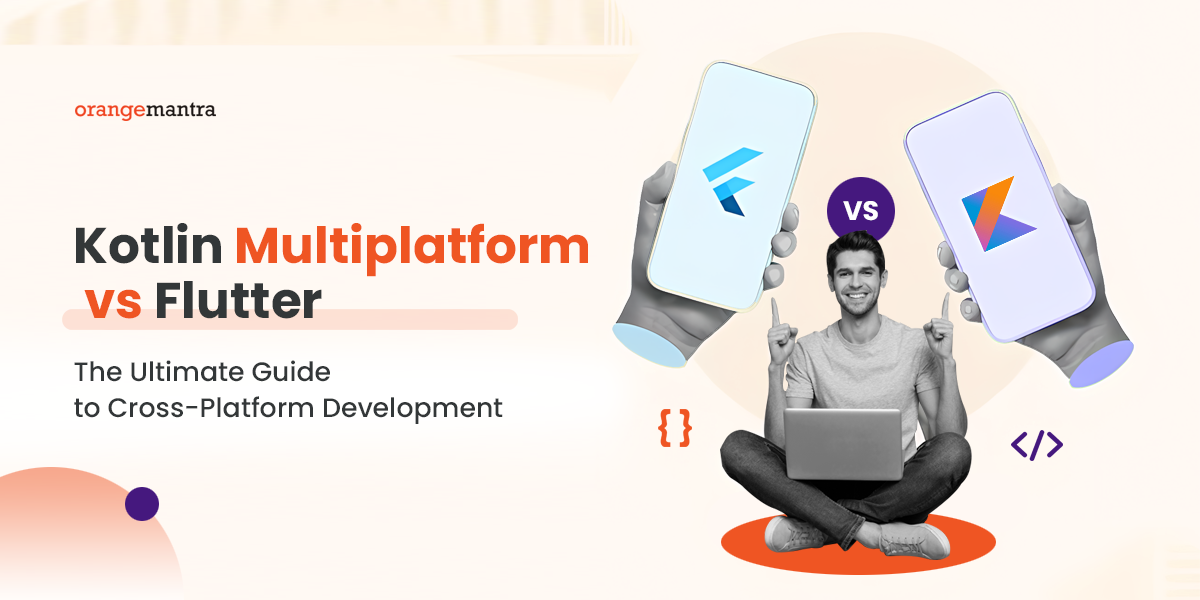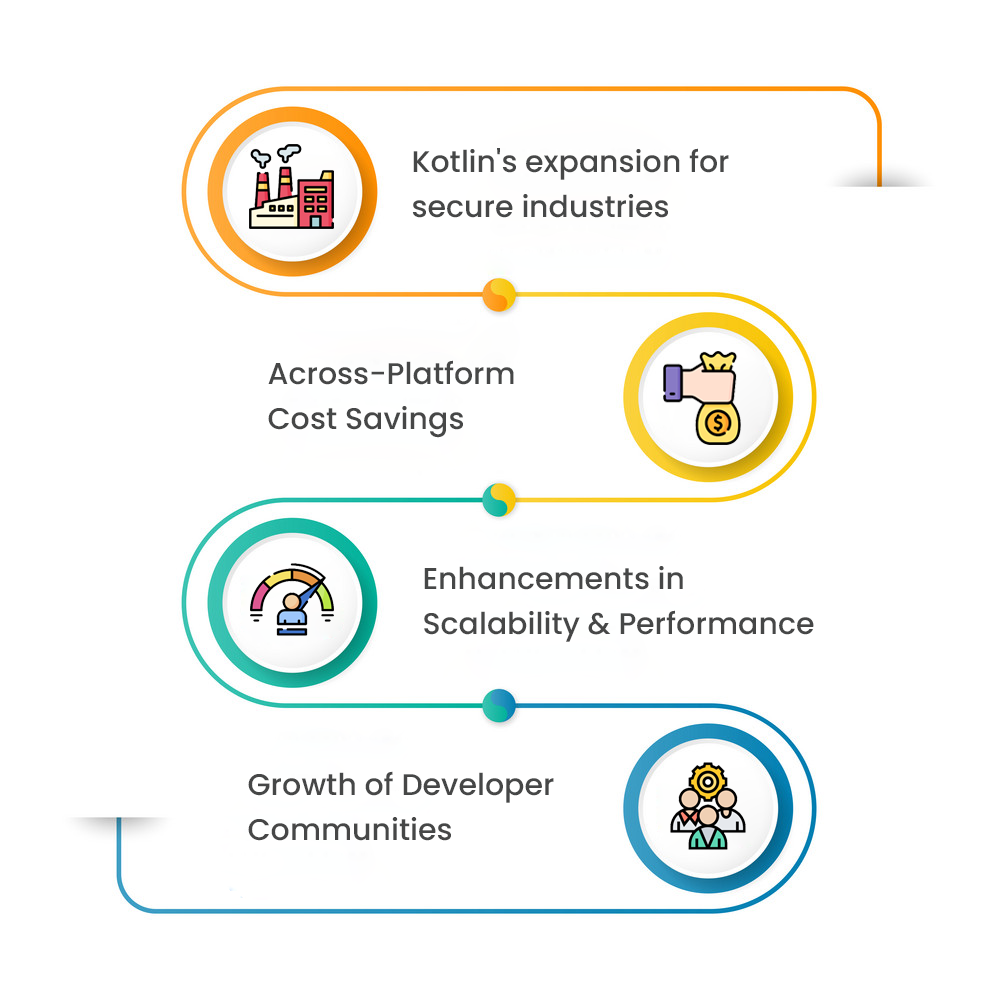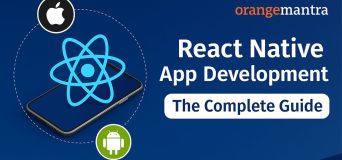
Still debating between Kotlin multiplatform and flutter? And if you are a business owner, CTO or someone who is tired of juggling iOS and Android builds separately, then this one is for you.
Here’s what you will learn:
Cross-platform development feels confusing, and the selection of a development framework becomes crucial as companies depend more on mobile applications to connect with consumers. Furthermore, with the ability to build applications for both iOS and Android using a single codebase, Kotlin Multiplatform vs Flutter has become a popular choice.
However, how can you decide which one best suit the particular requirements of your app Kotlin Multiplatform vs Flutter? The purpose of this guide is to assist where you’ll know exactly which framework fits your app goals, budget, and long-term scale.
Table of Contents
A Modern Approach to Understanding Kotlin Multiplatform Vs Flutter
The Kotlin language, which is natively supported on Android, was created by JetBrains, the company behind Kotlin Multiplatform (KMM). Furthermore, KMM enables native UI code for iOS and Android while enabling developers to reuse business logic across platforms. Applications that rely heavily on Android and want to extend to iOS may benefit from this strategy’s more Android-centric performance.
The Dart language is used by Google’s Flutter, which offers a single framework for creating desktop, web, iOS, and Android applications. Moreover, it enables programmers to create aesthetically pleasing user interfaces that work on all devices. Furthermore, Flutter has gained popularity among businesses looking to launch applications rapidly because of its capabilities for sophisticated animations and widgets, as well as its expanding developer pool of over 500,000 developers.
Things to Think About: Choosing the Best Option for Your Company, Kotlin Multiplatform vs Flutter
Consider these crucial elements while assessing development frameworks:
1. Efficiency in Cost
Although Kotlin Multiplatform enables developers to reuse code across platforms, the user interface (UI) has to be natively written for iOS and Android, which might raise startup costs. Nonetheless, it often lowers maintenance costs, particularly for apps designed for Android. In contrast, Flutter uses a single codebase for both iOS and Android, which may save up to 30% on development expenses.
2. Scalability of Performance
Kotlin Multiplatform provides almost native speed on Android for apps that use a lot of data. Furthermore, smoother, higher-performance experiences may result from its capacity to share just business logic while maintaining native user interfaces. Flutter’s methodology, on the other hand, works well for small-to-medium business solutions and visually appealing apps where performance scaling is not the main issue.
3. Development Resources and Community
The distinct communities and support systems of Flutter and Kotlin Multiplatform might affect troubleshooting and development pace. Because of Google’s enormous support and resources, which provide access to a great array of plugins, tutorials, and third-party integrations, Flutter has a large and vibrant community.
Despite being more recent, JetBrains supports Kotlin Multiplatform and it enjoys a constant increase in resources and support as Android developers use it more and more. Furthermore, as more companies prefer Android-first functionality, Kotlin is catching up, but Flutter presently has a bigger developer community by 30%, which might imply quicker access to solutions, according to recent industry statistics.
4. Compatibility with Current Native Code
Integration with native iOS or Android components might be crucial when working with an existing codebase. Moreover, businesses with native Android applications benefit from Kotlin Multiplatform’s ability to integrate easily with pre-existing Android projects and libraries, which makes Android extensions and upgrades easier.
For projects containing major native integrations, Flutter may hold down the process a little since it frequently takes more initial setup and changes for flawless interaction with native modules, especially on iOS.
5. Updates and Long-Term Maintenance
Adaptability to changing mobile operating systems and long-term maintenance are important factors. Furthermore, businesses who prioritize Android compatibility may find Kotlin Multiplatform structure useful since it offers a high degree of flexibility with Android releases. Kotlin Multiplatform vs Flutter’s single codebase approach helps expedite cross-platform requirements that favor concurrent iOS and Android upgrades while also lowering expenses over time.
According to recent industry surveys, Flutter users enjoy 20-25% cheaper maintenance costs as a result of this single codebase strategy. Moreover, Android app development is an important consideration for companies who want to maintain efficient maintenance operations.
A Comprehensive Comparison of Flutter vs Kotlin Multiplatform
Maintenance and Development Time
Kotlin Multiplatform
Well-known for its smooth Android integration, this platform is a favorite among businesses that specialize in Android-first apps. Kotlin offers better control over Android versions and deeper integration, which is why it is favorable for teams that are used to native android workflows.
Flutter
Furthermore, a single codebase is perfect for rapid market launch since it requires fewer resources and time for both initial development and upgrades. If you’re looking at long-term savings, Flutter might edge out—unless your core market is Android-first.
User Interface and Experience
Kotlin Multiplatform
Want your app to feel like a native iOS or Android build? Kotlin’s got you. It uses the actual UI components of each platform without compromises. Thus, building UIs that match platform expectations 100%—great for finance, healthcare, or brand-sensitive apps.
Flutter:
uses its own widget system to create stunning, consistent UIs across platforms. Animations? Smooth. UI transitions? Flawless. It’s built for visual-heavy apps, making it suitable. Whether you’re building a sleek media app or a rich eCommerce experience, Flutter allows for pixel-perfect, highly interactive UIs to do so.
Performance and Responsiveness
When it comes to performance, the Kotlin Multiplatform vs Flutter debate gets interesting.
Kotlin Multiplatform
You get the native user interface here, thanks to its direct access to native APIs and rendering layers where programs that rely heavily on Android have almost native performance.
Flutter:
Excellent for programs that use animations, Flutter performs exceptionally well for most modern apps, but it may not be able to handle more complex, hardware-dependent applications.
Support and Community
Kotlin Multiplatform
JetBrains-backed, with a burgeoning community centered on Android-centric projects. It continues to receive major tooling improvements, including full IDE support and Compose Multiplatform enhancements.
Flutter
On the other side of the Kotlin vs Flutter equation, Flutter boasts massive community support and Google’s firepower with a large developer community, which includes a thriving marketplace for tools and plugins, supporting Flutter. It’s ideal if you want access to rapid dev cycles, a plug-and-play ecosystem, and ongoing innovation.
2025 Trends: Perspectives on Developing Across Platforms
Furthermore, it was anticipated that by 2024, cross-platform solutions will account for 45% of mobile app initiatives. In the Kotlin Multiplatform vs Flutter conversation, Flutter is still a preferred option for industries like education and retail due to its single-codebase methodology, which streamlines updates and expedites development.
1. Kotlin’s expansion for secure industries
Kotlin Multiplatform is becoming more and more popular for finance and enterprise applications where near-native performance and data security are critical. Kotlin Multiplatform is expected to be used by financial institutions due to its safe backend integrations and effective Android compatibility.
2. Across-Platform Cost Savings
When compared to separate native builds, businesses that use Flutter often claim 30% savings in development expenses. Furthermore, trends suggest that more businesses will favor cross-platform solutions in 2024 for cost-effectiveness. Thus, in the Flutter vs Kotlin cross-platform race, Flutter often stands out for cost savings.
3. Enhancements in Scalability and Performance
Better speed and scalability are being driven by improved frameworks in Kotlin Multiplatform Vs Flutter. While Kotlin’s architecture provides great performance on Android, which benefits big corporations, Flutter’s upgrades aim to provide seamless experiences for small-to-medium commercial applications.
4. Growth of Developer Communities
The developer bases of both platforms have seen notable growth: Kotlin’s developer base has increased by 20% and Flutter’s by 25% in the last year. Moreover, the Kotlin Multiplatform vs Flutter trend increases the availability of resources and support choices for companies using both platforms.
Kotlin Multiplatform Benefits for Businesses
1. Native-like Android Performance:
Furthermore, Perfect for apps that give Android top priority
2. Adaptable Integration:
Beneficial for businesses wishing to go from Android to iOS with current Android applications.
3. Enhanced Code Reusability:
Cross-platform app development company productivity is increased by reducing repetitious coding with reusable business logic.
4. Expanding JetBrains Support:
Kotlin Multiplatform is becoming a more reliable option with new releases.
5 .Lower Long-Term Maintenance Costs:
Over time, maintenance issues are lessened by independent UI development.
Top 5 Flutter’s Benefits for Businesses
Quick Development and Deployment
Flutter streamlines development and deployment schedules by using a single codebase.
Exceptional Customizable User Interface
Flutter’s widgets enable businesses to develop aesthetically appealing applications.
Multi-Platform Reach
Flutter apps may be used on desktop and web platforms in addition to mobile, giving entrepreneurs more options.
Low-Cost Maintenance
Furthermore, the single codebase lowers development and maintenance expenses.
Large community
The availability of a large community and Mobile app development services resources facilitates rapid invention and troubleshooting.
Feature Matchup: Kotlin Multiplatform vs Flutter for Cross-Platform Development
| Feature | Kotlin Multiplatform | Flutter |
| UI/UX | Uses native UI (Jetpack Compose, SwiftUI), perfect for platform-specific experiences
|
Custom widget-based UI; highly flexible, great for pixel-perfect, animated designs |
| Performance | Near-native performance on Android; best for logic-heavy or secure apps
|
Fast and fluid for UI-rich apps; may need optimization for hardware-intensive tasks
|
| Code Sharing | Shares business logic, not UI; keeps platform-specific design intact
|
Shares both logic and UI; full code reuse across platforms |
| Tooling & IDE Support | Seamless with IntelliJ/Android Studio; backed by JetBrains
|
Excellent tooling with VS Code & Android Studio; backed by Google |
| Best Use Cases | Enterprise apps, fintech, healthcare, and Android-first products
|
Startups, MVPs, eCommerce, and visually rich consumer apps |
| Support & Longevity | Gaining traction fast, especially for Android-first teams
|
Backed by Google; solid roadmap and long-term viability |
Top Case Study for the Development of Flutter and Kotlin Multiplatform
Kotlin Multiplatform Finance App
Kotlin app development company was chosen by a finance business to develop a safe and very responsive Android app that is also compatible with iOS. Because of the smooth Android experience, this decision resulted in a 20% boost in user retention.
Flutter-Powered eCommerce App
Flutter was selected by an eCommerce company because of its cross-platform compatibility and configurable user interface. Within six months, the app’s user engagement increased by 25% as a result of the consistent, eye-catching platform experience.
Real-World Use Cases by Industry
- Fintech: KMM is preferred due to high-performance needs and Kotlin’s robust backend integrations.
- Retail & eCommerce: Flutter shines here—quick deployment, beautiful UIs, and multi-platform reach.
- Education & Media: Flutter’s UI power is ideal for engagement-heavy platforms.
- Enterprise Migration Projects: Kotlin helps extend Android codebases to iOS with minimal disruption.
Concluding Remarks: Which Framework Is Best for You?
Take your target audience, spending limit, and particular requirements into account while choosing between Kotlin Multiplatform Vs Flutter. While Flutter is best suited for businesses looking for quick deployment and aesthetically appealing apps across various platforms, Kotlin Multiplatform is advised for Android-first applications that need excellent performance.
When picking a development partner, choose a seasoned KMM app development company or Flutter app development company that can help you choose the ideal framework and is aware of your business objectives.
FAQ
1. Which platform is more cost-effective for cross-platform development in 2025?
The single-code-based approach of Flutter lowers development costs by up to 30% for both iOS and Android. Furthermore, making it the most cost-effective platform for cross-platform development in 2025. Although Kotlin Multiplatform costs more upfront, it saves money over time, especially for applications that use a lot of Android.
2. What is the best framework for business applications?
For corporate projects, Kotlin Multiplatform is the ideal choice, particularly in industries like finance. Furthermore, where data security and performance are essential. Smaller, less data-intensive apps are better suited for Flutter.
3. What are the Flutter and Kotlin trends for 2025?
Nearly 45% of mobile initiatives will be cross-platform by 2025. Because of its performance and security, Kotlin Multiplatform is expanding in the enterprise and finance sectors. Moreover, Flutter is at the forefront of industries like retail and education.
4.Does Flutter require Kotlin?
Not exactly. Flutter itself is built with Dart and doesn’t require Kotlin to write apps. However, if you’re building a Flutter app for Android and need to use native Android features or plugins, Kotlin (version 1.5.31 or higher) may be required on the backend for proper integration.
5.Can I use Kotlin with Flutter?
Yes, absolutely! You can use Kotlin to write Android-specific native code in your Flutter app. This is especially useful when creating custom platform channels to access native features that Dart doesn’t support out of the box. Flutter handles the UI, while Kotlin can power the native Android logic behind the scenes.






